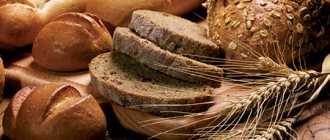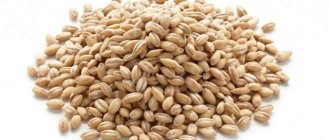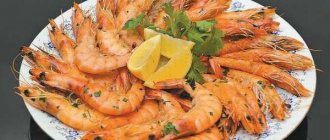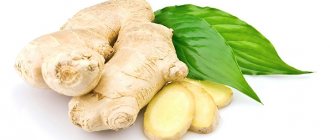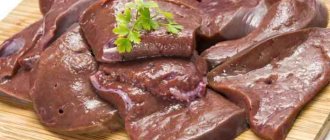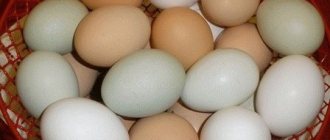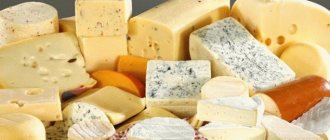Pilaf is prepared differently in individual countries, but the recipes are basically similar. Differences are manifested in the use of meat: lamb, poultry, beef. Residents of Russia and Ukraine put pork in pilaf. In the east it is not eaten. There are differences in the spices added to enhance the flavor.
If a person suffers from gastrointestinal diseases, in particular pancreatitis, the method of preparing pilaf changes.
Rules for selection and heat treatment of products:
- meat only lean varieties;
- spices only from the approved list;
- minimal use of vegetable fat;
- do not overcook foods;
- take into account the stage of the disease.
Compliance with all points will help avoid exacerbation of the disease.
Is it possible or not to eat rice with pancreatitis?
Due to the absence of gluten and other beneficial substances, rice is an easily digestible and healthy product that can be included in the menu of a patient with pancreatitis already on the 5-7th day after an acute attack and therapeutic fasting.
In case of chronic pancreatitis, rice can be used in various dishes; you can make porridge from it. In acute pancreatitis, rice is added to the menu for the first week of the disease, but the patient must adhere to certain restrictions, since the product can inhibit the activity of digestive processes, which can lead to the development of constipation. If pancreatitis is accompanied by diarrhea, using rice will help stabilize the stool.
What foods can you eat with pancreatitis and what can you not?
For pancreatitis, you must follow a special diet. The diet should contain protein-rich food, which promotes rapid healing of pancreatic tissue. Meals should be fractional, you need to eat in small portions 5 - 6 times a day. All food consumed should be warm, neither hot nor cold. It is necessary to consume boiled dishes; stewed and baked foods are allowed. Food cooked in a double boiler or oven is considered healthy, since such cooking uses a small amount of oil, and the food is boiled until fully cooked, becomes soft and easily digested.
The patient’s diet should include liquid and slimy porridges, pureed soups from vegetables and cereals, vegetable stews, puddings, soufflés, steamed vegetable cutlets, cutlets, meatballs, zrazy from chicken, veal, fish cooked in a slow cooker, etc. dietary dishes from lean meats, fish, homemade white bread crackers.
Allowed products include eggs (white), low-fat cottage cheese, low-fat cheeses, homemade yogurt without additives, kefir. Useful fruits include apples, especially baked ones, non-acidic berries, pears, plums, and peaches. As a drink, you can use a decoction of rosehip, chamomile, or weak green tea.
It is not allowed to use sweets, baked goods, sweets, coffee, mushrooms, rich broths, raw vegetables, greens and fruits (especially in the acute phase), fresh bread, brown bread, products containing artificial additives and dyes in the diet. You should not eat hard and coarse foods containing coarse fiber, fried foods, fatty, spicy, salty, smoked foods. The use of carbonated and alcoholic drinks, fast food, chips is strictly prohibited
General algorithm for preparing dietary pilaf
Steamed rice has more nutritional value, but cooking takes longer.
Pilaf recipes for pancreatitis have a common cooking principle - you cannot fry meat and vegetables. The best way is to cook in a slow cooker. The ability to stew the ingredients well without using fat is the main advantage of this device.
Eating pilaf for pancreatitis is recommended after the acute stage of the disease, when the condition gradually normalizes and there is already an appetite. During this period, it is too early to add all permitted products - you should limit yourself to lean meats:
- chicken without skin;
- turkey;
- quail;
- rabbit;
- veal.
With moderate symptoms of pancreatitis, you can afford to cook pilaf in a cauldron, but the dosage of vegetable oil will still have to be reduced.
Rice for pancreatitis and cholecystitis
The pancreas and gallbladder are organs that provide basic digestive processes in the body. Impaired functioning of one of them can cause problems with the other, since the digestive tract is a single system. With cholecystitis, as with pancreatitis, patients are prescribed dietary table number 5, according to which the diet should include pureed, mucous and milk porridges from various cereals, including rice. For cholecystitis, rice is added to the menu after the symptoms of the disease are eliminated and food is allowed to be taken. Rice should be used for cholecystitis, as well as for pancreatitis, in limited quantities, preferably combined with vegetable supplements, so as not to cause constipation. If a patient has a pathological condition accompanied by diarrhea, rice can improve intestinal function and normalize stool.
The benefits and harms of the dish
- Rice saturates the patient’s body with light carbohydrates, gives energy, and prevents diarrhea.
- Chicken meat provides easily digestible proteins and has dietary qualities if the skin is removed before cooking. Postoperative diets use chicken to restore the strength and immune system of patients.
- Carrots are needed for intestinal function and for digesting meat.
- Turmeric is used during remission of chronic pancreatitis as an anti-inflammatory and immunostimulating agent. Add spice to meat dishes instead of tomatoes. Enriches the taste of chicken.
If inflammation of the pancreas worsens, eating pilaf is prohibited, since the diet in the acute period of the disease includes only pureed pureed dishes.
The main benefits of rice
The composition of different varieties of rice differs from each other. However, the main components of the composition are the same and it is the presence of these elements that determines the usefulness of the product. Rice contains quite a lot of protein (about 8%) and important amino acids. The product contains fats, including saturated and unsaturated fatty acids. Rice also contains dietary fiber (there is more of it in brown rice), starch, vitamins b, e, n (brown rice is rich in them); many minerals: k, p, mg, cl, ca, na, s, fe, zn, i, mn, cu, se, cr, b, f, mo, si, al, v, ni, co. The energy value of rice can be considered low: about 300 kcal per 100 g.
Rice is easily digested by the body and does not cause stomach irritation or burden the pancreas. Soups and rice porridges have enveloping properties. Rice removes excess sodium from the body, thus normalizing metabolism.
Rice absorbs toxins and wastes in the body. The product has a fixing effect, which is especially important for indigestion and diarrhea. The product is useful for gastritis with high acidity, gastric ulcer and duodenal ulcer. The starch contained in rice, entering the intestines, almost unchanged, creates a favorable environment for the growth and development of healthy intestinal flora.
Rice is an indispensable product for dietary nutrition; many tasty and healthy dishes can be prepared from it, using different types, each of which has special taste and purpose.
Choosing the right rice
There are different types of rice offered in stores, but polished or steamed rice is more suitable for dietary nutrition. A particularly steamed type of rice has a special structure and is gentle on the walls of the gastrointestinal tract.
Polished rice contains a lot of starch and less nutrients. This type of cereal can be used to prepare dietary dishes, combining it with various stewed vegetables, lean meat, fish, fruits and dried fruits.
The use of wild or unpolished rice in dietary foods is not allowed. Such products irritate the mucous membrane of the digestive tract and stimulate the production of pepsin, which negatively affects the condition of the pancreas.
Brown rice for pancreatitis
Brown rice is not very different from the white variety. This is the same plant in its unpolished form. During production, rice grains are subjected to extremely gentle processing, which is why the pityriasis-like rough shell remains on their surface. It is not recommended to use brown rice for pancreatitis, especially during an exacerbation of the disease. In case of persistent remission, this type of cereal can be consumed in limited quantities, but it is prohibited to introduce it as a permanent component of the diet.
Useful recipes for illness
People suffering from this disease may like the following recipes for dishes and desserts that are allowed for inflammation in the gland.
Vegetable broth with cheese meatballs
For pancreatitis, rich soups and borscht are not recommended for consumption. The priority is liquid broths without meat and many ingredients. To make this dish you will need:
- 2.5 liters of purified water;
- 1 carrot;
- 1 bell pepper;
- 1 onion;
- potatoes (5 pieces);
- 1 egg;
- flour;
- cheese;
- butter.
The broth is cooked using finely chopped or grated vegetables. Place the ingredients in a medium saucepan and add boiling water. The broth preparation time is about 15 minutes.
Next you need to make the cheese meatballs. Choose unsalted cheeses as a base. Grate the cheese on a fine grater, then crush the butter with a fork. The ingredients should be mixed with flour and egg, and then formed into small balls. To prevent the mixture from sticking to the skin, it is recommended to wet your hands.
Place the finished meatballs in boiling liquid and cook for about a quarter of an hour. The soup can be slightly salted if the condition of the pancreas allows.
Vegetable pilaf
Many people love this oriental dish for its rich taste and satiety. However, spices, large amounts of oil and fatty meat from which this dish is made are prohibited for gastrointestinal pathologies. However, meat pilaf for pancreatitis can be replaced with vegetable pilaf. Even healthy family members will like this option, which is convenient for planning a joint diet.
The ingredients of this dish are:
- high grade milled rice;
- two glasses of water;
- zucchini;
- eggplant;
- onion;
- carrots (2 pieces);
- tomato;
- parsley and dill.
Eggplant, tomato and zucchini should be peeled before cooking. Grate the carrots on a medium grater. Then you need to peel and chop the onion and fresh herbs. Cut the rest of the vegetables into small cubes and put them on the simmer, first adding a glass of washed rice and pouring water.
In this case, a multicooker comes in handy. The ingredients should be mixed thoroughly and add a little salt.
The cooking time is limited by the readiness of the rice: it should not be crumbly, but more mushy. This structure will promote better absorption.
Breakfast for a patient with pancreatitis
Steamed omelet and oatmeal are not only useful for inflammation of the pancreas, but also a quite filling and tasty dish that will provide the patient with energy for the entire next day. A glass of carrot juice will additionally saturate the body with vitamins and give vitality. To prepare breakfast use:
- 2 egg whites;
- water;
- premium oatmeal;
- carrot.
To prepare a steam omelet, you should break the required number of eggs (taking into account the person’s appetite), after washing the shells under running water. Then beat the egg white with a little water and a pinch of salt.
It is most convenient to cook a steam omelet in a multicooker: to do this, you need to pour the resulting liquid into the bowl and set the device to the steam cooking mode. Cooking time is no more than 7-10 minutes.
Now you can move on to making oatmeal. To do this, pour three tablespoons of oatmeal with a glass of boiling water and simmer over low heat for 10 minutes. In this case, it is not recommended to simply steam the oatmeal with water, since uncooked pieces of porridge can negatively affect the health of the pancreas.
To make carrot juice you will need a juicer. The resulting freshly squeezed juice is diluted with water in a 1:1 ratio.
Baked apples
For many, apples baked in the oven are their favorite childhood dessert. For pancreatitis, this dish is also allowed to be consumed. To make the dish you will need:
- sweet apples;
- water;
- butter.
The apples must be thoroughly washed and the middle scraped out without cutting the fruit in half. Then place them on a baking sheet, after moistening it with plenty of water, and put a small piece of butter in the middle.
Turn the oven to 190 degrees and let it warm up a little. The dessert preparation time is about 25 minutes, until the apples are completely baked.
If you have pancreatitis, it is not recommended to sweeten dishes with sugar, however, with your doctor's permission, you can add a small amount of honey.
Pumpkin dessert
The pumpkin must be peeled and seeded, then cut into small pieces. After this, the cubes should be placed on a baking sheet moistened with water, greased with melted butter and sprinkled with a small amount of powdered sugar.
Bake the dish for about 30 minutes at 200 degrees.
The menu of a patient with pancreatitis, according to popular opinion, is monotonous and tasteless. To receive not only benefits, but also pleasure from therapeutic nutrition, you need to skillfully combine food ingredients. Let's consider recipes suitable for therapeutic and preventive nutrition.
- Dietary pilaf for pancreatitis can be prepared in the phase of stable remission. To prepare, you will need 1 glass of steamed rice (it contains more vitamins), 300 g of chicken fillet, large carrots, medium onion. Wash the fillet, cut into small pieces, place in a saucepan, put on low heat and cook for 10-15 minutes. Cut carrots and onions into cubes and place in boiling broth. Rinse the cereal and add it last. When the pilaf boils, reduce the heat and simmer for half an hour. During the remission phase, you can add a little salt.
- Steamed veal soufflé. Ingredients: boiled lean veal 300 g, steamed rice 15 g, skim milk ½ cup, 1 tbsp. butter, 1 egg, pinch of salt. Beat the meat together with a piece of butter and the yolk in a blender (you can use a meat grinder, but a blender gives the mass an airiness). Boil the cereal and cool, add to the veal. Beat the egg white until foamy and add to the minced meat. Grease a soufflé container with a small amount of butter, place the soufflé and place in a water bath for 20 minutes.
- Mucus soup can be consumed even in the acute phase of pancreatitis. For preparation you need: 600 ml of water, 50 g of steamed cereal, a pinch of salt. Rinse the rice and add to boiling water. Cook over high heat for 2 minutes, then over low heat until completely softened. Strain the resulting mass through cheesecloth. The liquid part is a ready-made slimy soup. In the first days of remission, you can add a little salt and a piece of butter.
Rules of consumption
Rules for eating rice dishes vary depending on the form of the disease.
- In acute pancreatitis, the patient should be given pureed rice porridge with water. From the 2nd week of the therapeutic diet, cereals can be boiled in milk diluted with water, adding a little sugar, butter and salt.
You need to start eating the dish with small portions (50g per day), gradually increasing the daily amount to 200g. You should not eat rice porridge every day, as this can cause constipation.
- For chronic pancreatitis, you can eat milk rice porridge containing salt, sugar and butter. The porridge can be viscous or crumbly. There is no need to grind the cooked cereal.
- During stable remission, rice porridge can be eaten in any form: liquid, thick, cooked in water or milk. In moderation, it is allowed to add not only butter, but also fruits, berries, honey, and jam. In the absence of relapses of the pathology, it is allowed to consume brown rice in limited quantities for six months.
What are the benefits of rice grains?
Rice water can be consumed in small portions from the first days of exacerbation of the disease.
For pancreatitis, rice has a beneficial effect on the elements and structures of the irritated digestive tract. As soon as the patient is allowed enteral nutrition, it is recommended to prepare a so-called rice water. In fact, it is a viscous porridge, but cooked in a large amount of water, without salt, sugar, milk, butter, pureed to a homogeneous consistency. On the first day, you are allowed to eat a spoonful of warm broth every two hours. Then the amount can gradually increase.
The benefits of rice water in the acute stage of pancreatitis:
- Boiled rice in water has a soothing and enveloping effect on inflamed mucous membranes.
- The stomach and pancreas are not overloaded, rice is well absorbed and digested.
- Rice is a natural sorbent; it absorbs toxins and stimulates their removal from the body.
- Porridge and other rice dishes will provide the patient with the energy necessary for recovery for a long time, as they contain complex carbohydrates.
- Rice grains will help you quickly cope with diarrhea, which often accompanies the acute stage of pancreatitis.
Important: for any form and stage of pancreatitis, you should eat white polished rice; other varieties are not suitable. White - better digestible and absorbed by the body.
Rice porridge for pancreatitis is prepared as follows:
- 50 g of polished white rice are washed in running clean water.
- Place a saucepan with 200 ml of water on the fire.
- When the water boils, add the cereal and reduce the heat.
- Cook the porridge, stirring, until the rice grains are completely cooked. You should get a viscous mass, reminiscent of jelly with grains of rice in consistency.
If the water boils away during cooking, you need to top it up. The finished broth is ground hot, cooled to room temperature and served to the patient.
Tip: to ensure that the rice cooks well and the water does not boil away, cook it covered over low heat. There is no need to “pity” the patient and cook the cereal in broth, season with salt and sugar - in the acute stage this is an absolute taboo! Such additives will only make things worse, cause worsening pain and prolong treatment.
Acute pancreatitis and rice
In acute pancreatitis, rice can be used from the 3rd day after the attack. It is not allowed to add salt, sugar, butter or vegetable oil, or spices to rice porridge during this period. The patient should use rice porridge pureed and diluted with water.
On the 7th day of the disease, it is allowed to give the patient rice porridge with low-fat milk, adding butter, salt and sugar. Gradually, the amount of rice in the menu is increased, monitoring the body’s reaction. Starting from the 14th day, the patient can be given low-fat soups with rice; after a month, rice pudding can be included in the diet.
During an exacerbation, you should only eat polished rice, since it does not contain a fiber shell, due to which the product is easily digestible and does not harm the pancreas.
Rice diet and its benefits
As many years of practice have shown, eating rice for pancreatitis will quickly and effectively improve the functioning of the digestive organs. The reason is the composition of rice grains, which contain a maximum of carbohydrates, which give the body additional energy for work and relieve hunger for a long time.
Benefits of the rice diet:
- A simple rice porridge or soup can work wonders of medicine in a sore stomach. Thanks to their viscous consistency, both dishes coat the mucous cavities, forcing the pancreas to work properly. As a result, digestion is easier and faster, the risk of diarrhea is reduced, and the stomach begins to absorb food normally again, without unpleasant consequences.
- Rice is quickly digested and well absorbed by the body; eating cereal will hardly put any strain on the affected pancreas.
- Due to its sorbing ability, cereal absorbs toxins, which greatly complicate the normal passage of the digestive process.
It is important not to get carried away with the rice diet, consume in small portions, soon the patient will feel pleasant changes in the body. The danger of constipation present with such a diet can be easily eliminated by including vegetable dishes and fresh fruits in the daily menu.
Rice in the treatment of acute pancreatitis
The first signs of acute pancreatitis appear in patients who have suffered an attack of the disease. The attack is accompanied by acute, sometimes unbearable pain in the abdominal area, the source of which is the inflamed pancreas.
After such an attack, the patient is allowed to eat normal food after two to three days. First drink, then liquid rice porridge with water and milk without butter, salt and sugar is added to the diet. After a couple of days, rice soup appears. By the end of the first month of treatment, the patient has the right to choose pudding or rice meatballs.
Polished rice is used to prepare dishes. Cereals boil faster and are absorbed by the body better than other varieties. Eating rice during pancreatitis, especially in the acute stage, is useful due to its sorbing properties and “calming” effect on the mucous membranes of the stomach.
If the patient has chronic pancreatitis
When the chronic stage of pancreatitis occurs with characteristic signs of exocrine and endocrine insufficiency, careful monitoring of nutrition is required. Rice remains part of the list of a few products recommended for the patient, which continue to have a positive effect on the gastrointestinal tract in conditions of exacerbation of the disease.
To diversify the rice diet and saturate the food with vitamins, proteins and microelements, it is allowed to consume the cereal in combination with boiled or stewed vegetables. You can use rice as a side dish for fish, lean meat, adding a little vegetable oil/butter or kefir to the dish. You should not exclude the usual rice porridge with milk and cereal soup from your diet. Casseroles, puddings, and vegetables stuffed with rice are useful for chronic pancreatitis.
At this stage of the disease, polished grains can easily be replaced with steamed rice, which is quite suitable for preparing a side dish. The cereal needs to be cooked longer until soft.
It is recommended to avoid frequent consumption of rice dishes during remission of chronic pancreatitis. Every body needs a large range of nutrients, which white rice is poor in. The rice diet partially complicates bowel function, leading to frequent constipation. Brown rice, unlike white rice, retains selected microelements during heat treatment, however, the use of this grain is extremely rare in case of stable, confident remission.
Chronic pancreatitis and rice
Rice is an easily digestible grain that is beneficial for general health and is especially valuable as a dietary product. For chronic pancreatitis, the use of rice is recommended as a healthy and nutritious product with restorative and enveloping properties. It is necessary to limit the amount of rice consumed if the patient has constipation. In such cases, it is recommended to combine cereals with vegetables and fruits. A balanced diet will help you avoid problems such as constipation and provide the body with vitamins, which is especially important for pancreatitis.
Cooking method
Preparing such pilaf will not be difficult. However, care must be taken to ensure that the food does not burn during the cooking process. Follow these steps step by step:
- Place chicken meat in a deep frying pan and add half a glass of water, and simmer over medium heat for no more than 10 minutes;
- add diced carrots and onions to the meat and simmer for another 10 minutes;
- add half a glass of water to the pan with meat and vegetables, turn the heat as low as possible and simmer the dish under the lid for another half hour;
- Pour the washed rice with water and leave for 30 minutes until the vegetables and meat are stewed;
- add rice to the pan with meat and vegetables, pour water so that all the rice is under water, close the lid and simmer for about 15 minutes;
- turn off the heat and leave for another 15 minutes without stirring or opening the lid.
Despite its obvious dietary nature, such rice cannot be included in the daily menu of a person suffering from inflammation of the pancreas. You should definitely consult your doctor about the permissibility of eating this dish, taking into account the clinical picture of the disease and the treatment being carried out.
Pilaf is a famous dish of the Middle East, the meaning of the word is “boiled rice”. The dish is prepared from rice grains with the addition of meat, fish, vegetables, and dried fruits. Fruit pilaf is also prepared. In the national cuisines of the East, the dish is quite fatty, but nutritionists have altered the recipe for people with diseases of the gastrointestinal tract. “Pilaf for pancreatitis” is not a fantastic statement, because the recipe that the article will introduce was prepared in accordance with medical recommendations. During the period of remission for pancreatic disease, a second hot dish is included in the weekly menu, and pilaf can also take its rightful place on the holiday table.
Recipes for cooking rice for pancreatitis
Rice dishes prepared taking into account the rules of dietary nutrition allow you to make the menu bright, tasty and interesting.
Nettle and rice soup
The vitamin-rich soup is prepared using 100g of rice, onions, carrots, 2 tbsp. oils
Rice must be washed and placed in boiling salted water. After 20 minutes, add finely chopped nettles, butter, finely chopped onions and carrots and cook the soup for another 10 minutes.
Soup with zucchini and rice
The combination of vegetables and rice makes it possible to obtain a nutritious and flavorful dish that prevents the development of constipation.
To prepare the soup, you need to take one medium-sized zucchini, 100g rice, 1ml water, 10g butter, salt.
The zucchini is washed and peeled, cut into cubes, and thrown into salted boiling water. Add rice to it and cook for 15 minutes. At the end of cooking, chopped herbs are added to the soup, and butter is added when serving.
Rice pudding
Rice dessert can replace various sweets and baked goods while on a diet. You need to take 600 ml of milk, 60 g of rice, 50 g of sugar, a bag of vanillin, 30 g of raisins, salt.
In a medium saucepan, mix milk, rice and salt, then place the pan with the resulting mass over high heat and bring to a boil. Then reduce the heat and cook until the rice is soft, this usually takes 25 minutes. The mixture must be constantly stirred so that the rice does not stick to the bottom and walls of the pan. Then remove the pan from the heat and add sugar and vanillin to the existing mass, return to the heat and cook until thickened (5-10 minutes). After the pudding is removed from the heat and raisins are added. Transfer the pudding into a mold and cover with plastic wrap. Can be consumed after 2 hours.
Rice is a healthy and nutritious product that is present in almost all diets prescribed to normalize the functioning of the digestive tract. The product should be used for pancreatitis in quantities specified by a nutritionist to eliminate negative reactions of the body.
Recipes for dietary pilaf for pancreatitis in a cauldron and slow cooker
Cooking pilaf in a slow cooker is safer for gastrointestinal diseases. Rice cooks better, making it easier to digest. The meat turns out softer.
Multicooker recipe
Required quantity of products:
- chicken, turkey, rabbit, veal meat – 1 kg;
- large carrots;
- a small onion (if the body perceives it normally);
- half a liter jar of rice;
- liter of water.
To prepare pilaf in a slow cooker, you need to properly cut the vegetables into strips or bars. The onion is cut into rings so that the taste remains, and the rings can be removed during eating if necessary. In order not to fry vegetables with meat and not to use fat, you first need to fill the meat with water, add spices and salt. Turn on the multicooker for 45 minutes (depending on the modes of the specific device).
Add vegetables and rice when the meat is soft. If there is a “Pilaf” mode, then turn it on. If not, cook the rice for another half hour.
The good tolerance of vegetable oil allows you to add 3 - 4 tablespoons to water with meat. An alternative to sunflower oil can be sesame oil. It must be added to the finished dish.
Reviews
Dear readers, your opinion is very important to us - therefore, we will be glad to hear your feedback about rice for pancreatitis in the comments, this will also be useful to other users of the site.
Lydia
When I fell ill with pancreatitis, I didn’t eat anything for the first few days, I only drank rosehip infusion. On the 4th day, the doctor allowed me to eat pureed rice porridge. I didn’t like rice before, but after fasting, the porridge seemed very tasty. During the period of remission I often eat rice dishes. I cook porridge, pilaf with chicken in a slow cooker and pudding with rice.
Alice
I make milk porridge from rice in a slow cooker. The result is delicious and healthy food for the whole family. My husband has pancreatitis and for him I prepare soup with rice and vegetables separately. I add onions, carrots, herbs, and a piece of chicken breast to the soup. It turns out to be an appetizing and dietary dish.
Rice for chronic pancreatitis in remission
Can I have rice or not during remission, and in what form? The period of subsidence of clinical symptoms is a favorable time to expand the diet with rice dishes. But you should not abuse them for the following reasons:
- white, boiled rice, due to the fact that it is peeled, contains a small amount of useful substances,
- unpolished rice is healthier, however, you can cook anything from it only during a period of stable remission,
- Cereals are contraindicated if there is a predisposition to constipation. Even rice water and its infusion slow down intestinal motility and cause constipation.
Despite the shortcomings and possible consequences among all cereals, rice remains the leader in the number of dishes allowed for illness.
To eliminate the deficiency of nutrients (microelements and vitamins), you can add a vegetable to the cereal, for example, carrots or pumpkin. If there is no history of diabetes, then you are allowed to prepare sweet dishes as dessert - pudding, casserole. Brown, red, and wild rice are perfect for preparing your own dish for dinner. A good addition would be a portioned piece of boiled low-fat meat or fish.
